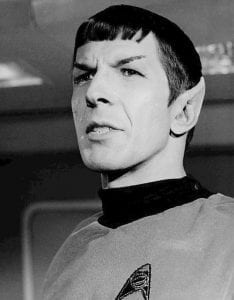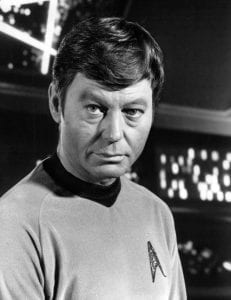Struggling to understand your customers? You’re not alone!
The purchasing patterns of customers can be bewildering! To illustrate this, let’s talk about everyone’s favorite space sci-fi franchise Star Wars Star Trek.
Sometimes, your customers will behave rationally like Obi Wan Spock. Other times, they will behave emotionally like Anakin McCoy.
The rational consumer

Traditional economics operates on the idea that people make decisions through rational analysis, aiming to maximize personal benefit. This perspective, known as rational choice theory, suggests individuals weigh options logically to pursue their own goals. In this view, consumers are expected to choose products that offer the greatest value at the lowest cost.
Who is pushing the rational buy?
No Name, Loblaw Companies Limited’s line of generic household and grocery products, is another brand that’s pushing the rational buy. The brand, which is most known for its nondescript black and yellow packaging, offers consumers quality products at affordable prices. In 1978, No Name launched with 16 products, and today, the brand occupies a considerable share of the shelf with nearly 3,000 products.

Dollar Shave Club disrupted the shaving industry by selling high-quality generic razors at lower prices than its brand-name counterparts. The company’s first ad went viral by pushing this very positioning statement:
Are the blades any good? No… our blades are f**king great… And do you like spending $20 a month on brand-name razors? 19 go to Roger Federer.
In 2016, Dollar Shave Club was projecting more than $200 million in revenue, and in the same year, the company was purchased by Unilever for $1 billion.
The irrational consumer

As Investopedia explains,
Behavioral economics draws on psychology and economics to explore why people sometimes make irrational decisions, and why and how their behavior does not follow the predictions of economic models.
Behavioral economists assert that consumers often stray from their own best interests because self‑control falters and emotions take over. In his book Nudge, Richard Thaler brought these insights to a broad audience. He coined the term “choice architecture” to describe the deliberate structuring of how options are presented, and showed that small shifts in framing can subtly steer decisions. Today, this principle underlies many public policy initiatives and business practices.
Who is encouraging the emotional purchase?
Instead of buying coffee beans in bulk, Portland coffee roaster Stumptown chooses to buy its beans directly from the people who grow them. Although there are cheaper coffee brands out there, Stumptown’s commitment to being socially and environmentally conscious appeals to its customers and makes them behave economically irrationally by buying a more expensive brand.
The same is true for farmers’ markets. Although there are products of comparable quality available at lower prices in grocery stores, people opt to shop at farmers’ markets because they want to shop locally, reduce their carbon footprint, promote sustainable farming, support the ethical treatment of animals, and so on.
According to Psychology Today,
Psychological studies reveal that the purchase decisions about packaged goods products are largely driven by consumer perceptions that the brand is an extension of the self. This connection is based on the closeness of the match between the personality of the brand and the consumer’s own personality.
We also see this in luxury products. Consider the Apple Watch. The standard Apple Watch starts at $399, but the fashionable Apple Watch Hermès starts at $1,399. Back when the Apple Watch first launched, the company sold luxury smartwatches for as high as $17,000. Psychologists call this “wealth signaling.”
Kids call it “flexing.”
Wrapping up
To effectively sell your product, you have to appeal to your customers’ logic, emotions, or both. In the bestselling book Switch: How to Change Things When Change Is Hard, authors Chip and Dan Heath liken emotion to an elephant and logic to a rider; the most successful stories come from a blended appeal.
Some purchases are based on logic, whereas others are based on emotion. Ultimately, different customers value different things, and what they buy is an extension of who they are.
In that case, I’m a pair of Star Trek pajamas, a one-liter bottle of Mountain Dew Baja Blast, and a family-size bag of Cool Ranch Doritos.
Oh no…